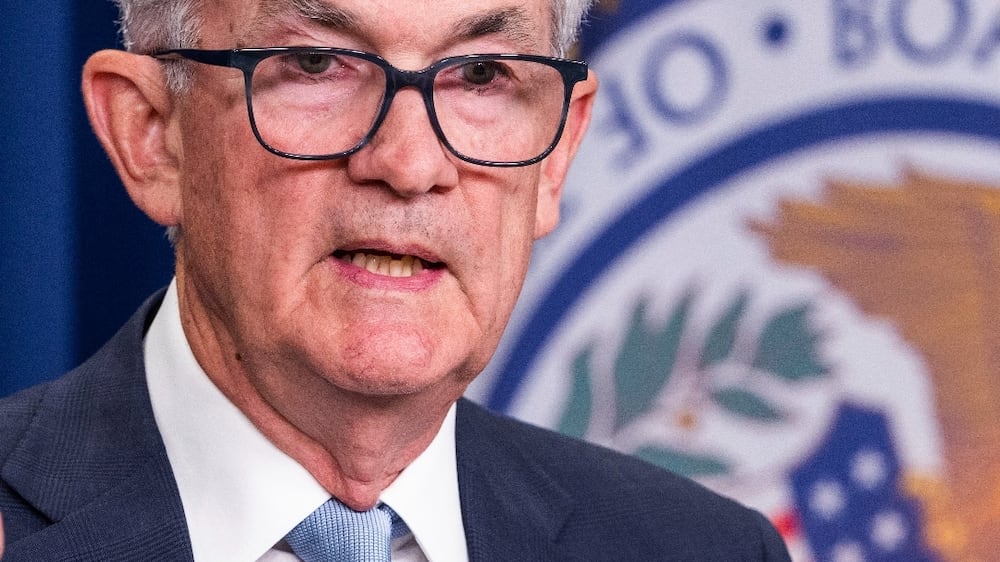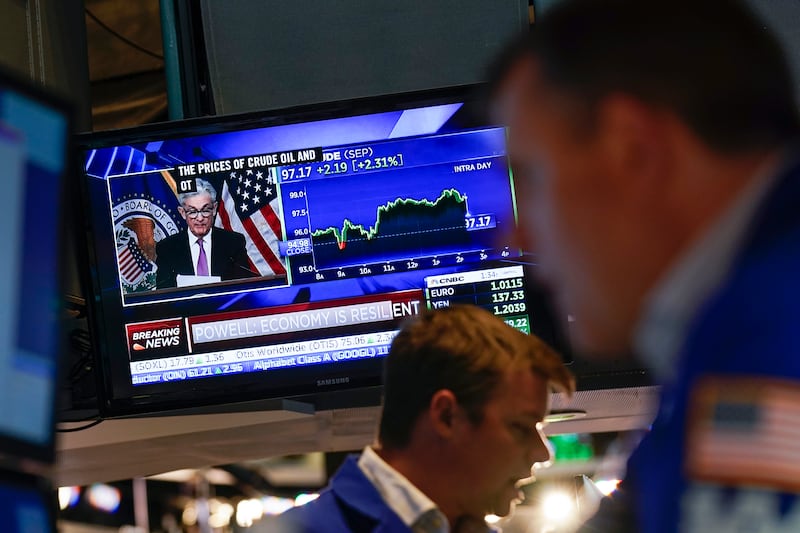US equities continued their bullish run through to the end of July, with the S&P 500 closing the month more than 9 per cent higher, while the Dow Jones Index gained more than 6 per cent.
However, the tech-heavy Nasdaq was the star performer of July, surging more than 13 per cent.
The economic backdrop that has formed over the past few weeks would suggest curiosity as the reason for the stock market rally.
Last week, the US Federal Reserve increased rates by another 75 basis points as it continues to try to rein in inflation, while second-quarter earnings have not been spectacular by any means and a slower-than-expected gross domestic product reading has increased the possibility that the US has entered recession — at least technically.
US Federal Reserve raises interest rate by 0.75 percentage points

Despite these undertones, we saw one of the biggest-two day rallies in stock markets last week, no doubt sparked by the Fed's dovishness at its last meeting, which led to the larger inflow into equities.
With core inflation slowing for a second month in a row, the unwinding of dollar positions and the subsequent flow into riskier assets has clearly picked up, while the current earnings season has not tanked as much as expected — even causing a muted cheer in markets.
However, the boost in markets — amid slowing economic growth and murmurs of a possible US recession — could be seen as a relief rally before we have a leg lower as the end of the summer approaches.
At the Federal Open Market Committee's meeting last week, chairman Jerome Powell highlighted that rate rises will be data dependent — and this week promises to deliver more insights.
The US non-farm payrolls (NFP) report, one of the most critical pieces of data for future Fed decisions and market perceptions, will be released on Friday.
US GDP fell at an annual rate of 0.9 per cent in the second quarter. This followed a 1.6 per cent decline in the first quarter, which suggests a strong recession signal.
However, the White House insists that the US is not in a recession — and supporting the case is their argument of a strong labour market.
This makes the coming NFP report even more critical.
Expectations are for a gain of 250,000 jobs in July, with the overall unemployment rate unchanged at 3.6 per cent.
With the Fed so clearly data dependent, improving US data should then point to a more hawkish central bank in the lead-up to its September policy meeting. Deteriorating US data, on the other hand, could lead to a more dovish Fed.
There is now a situation where bad data is good news.
Going forward, keep an eye on US Treasury yields — the more dovish the Fed, the more the dollar will weaken and equity markets will rally.
As for the US Dollar Index, I expect short-term support to kick in at 103.60 levels.
Also coming up today is the Opec meeting. Oil prices have inched higher this week in the lead-up to the meeting, while recent reports have suggested that output targets will remain largely the same.
However, there have also been calls for a slight increase in output amid the global economic uncertainty.
The outcome of the meeting should see oil prices remain steady. Expect to see the price hold above $88 a barrel for West Texas Intermediate, the gauge that tracks US crude, while the upside will be capped at $98 in the weeks ahead.
Finally, with future Fed policy so dependent on the US data docket, keep an eye out for next week’s US inflationary print, which is scheduled for August 10.
Expectations are for core consumer prices to edge back 0.5 per cent, marking the third consecutive print that hints at slowing US inflation.
Gaurav Kashyap is risk manager at Equiti Securities Currencies Brokers. The views and opinions expressed in this article are those of the author and do not reflect the views of Equiti Securities Currencies Brokers







